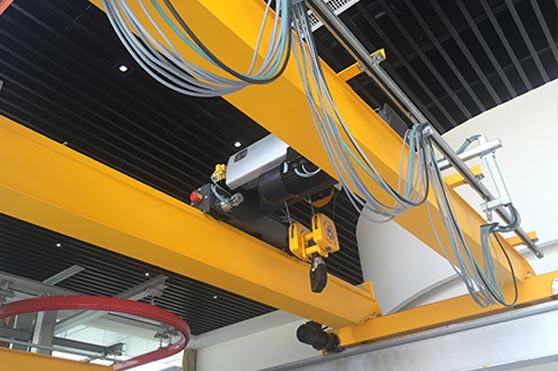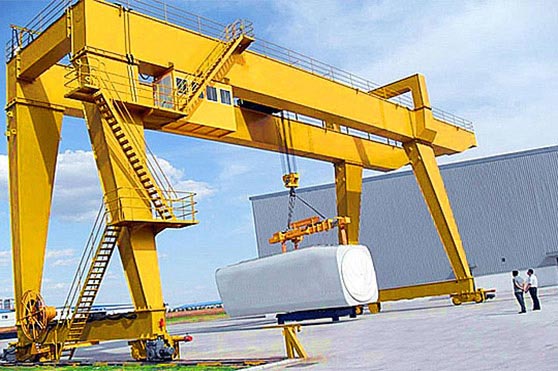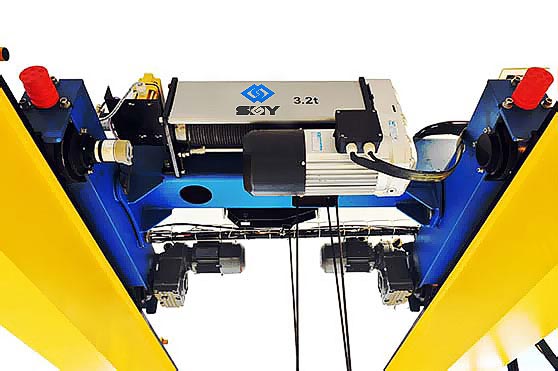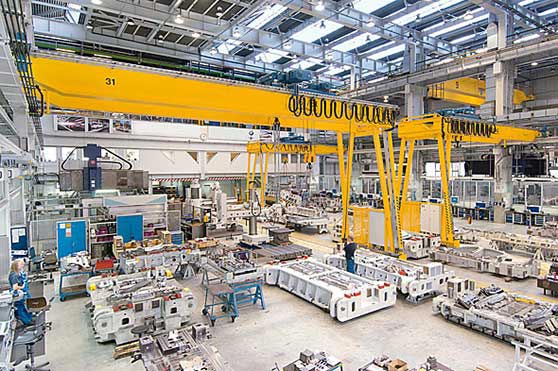In the process of using the electric hoist, it is inevitable that there will be failures. In order to do a safe operation of the electric hoist, promptly and accurately deal with various failures that occur during operation, has become an important part of construction and production. Combined with the experience of installation and maintenance, a detailed analysis of the causes of some common faults of electric hoist

1. The electric hoist does not work after pressing the start switch
Mainly because the electric hoist is not connected to the rated working voltage, it can not work, there are generally three situations:
(1) No power. Whether the power supply system supplies power to the electric hoist power supply, generally use a test pencil to test, if there is no power supply, wait for the power to work.
(2) Missing phase. The damage to the electrical appliances of the hoist main and control circuit, the disconnection of the circuit or the poor contact will also cause the lack of phase of the hoist motor to work normally. In this case, the main and control circuit need to be repaired. The power supply of the three-phase motor burns the motor due to the lack of phase, or the hoist motor is suddenly powered up to cause harm. Be sure to disconnect the hoist motor from the power line, only supply power to the main and control circuits, and then jog the start and stop switches , Check and analyze the working conditions of the control electrical appliances and circuits, repair or replace the problematic electrical appliances or circuits, and only confirm the main and control circuits are fault-free before re-commissioning.
(3) The voltage is too low. The hoist motor terminal voltage is more than 10% lower than the rated voltage, and the motor starting torque is too small, so that the hoist cannot lift the goods and cannot work. When checking, use a multimeter or voltmeter to measure the motor input terminal voltage.
2. Abnormal noise when the electric hoist is running
Many faults of electric hoist, such as faults that occur in control appliances, motors, or reducers, are often accompanied by abnormal noise. The location, height, and sound of these noises are different according to the cause of the fault. You can use or according to the characteristics of the fault sound, determine the location of the sound, find and repair the fault.
(1) Abnormal noise occurs on the control loop and emits "hum" noise. Generally, the contactor has a fault (such as poor contact of the AC contactor, inconsistent voltage level, and the magnetic core is stuck, etc.). The device is overhauled and must be replaced when it cannot be overhauled. After processing, the noise is eliminated by itself.
(2) The motor emits abnormal noise, and it should be stopped immediately to check whether the motor is single-phase running, or the bearing is damaged, the coupling shaft is not correct, and the "bore sweep" and other faults, these will make the motor have abnormal noise, the location of the noise of different faults The difference between the level and the sound is different. During single-phase operation, the entire motor emits a regular "buzzing" sound; when the bearing is damaged, it will be near the bearing and emit a "buzzing" with "crocking-crocking". Sound; and when the coupling shaft is not correct, or the motor is slightly bored, the entire motor emits a very high "buzzing" sound, sometimes accompanied by a sharp and harsh sound. In short, according to the different noise, find the fault, carry out item-by-item repair, restore the normal performance of the motor, when the motor fault is not handled, the use of hoist is prohibited.
(3) Abnormal noise is emitted from the reducer, and the reducer fails (such as lack of lubricating oil in the reducer or bearing, worn or damaged gear, damaged bearing, etc.), at this time, it should be shut down to check, first determine the reducer or bearing of the reducer Whether the lubricating oil is added before use, and whether the lubricating oil is changed regularly during use. If it is not lubricated as required, the reducer will not only produce an excessively high "buzzing" sound, but also excessively wear or damage gears and bearings.
3. The stopping and sliding distance during braking exceeds the specified requirements
When the electric hoist is applied for a long time, the brake ring wears too much, which reduces the pressure of the brake spring and reduces the braking force. The solution is to adjust the brake bolt or replace the brake ring.
4. The motor temperature rise is too high
First, check whether the hoist is overloaded. The overload will cause the motor to heat. Long-term overload will burn the motor; if the motor is not overloaded, it will still heat. Check the motor bearings for damage; also check whether the motor works according to the specified working system, which also causes the motor to heat One of the reasons is that it should work strictly in accordance with the motor working system when used. When the motor is running, the brake gap is too small, and it is not completely disengaged, which generates a lot of friction. At the same time, the friction heat also increases the additional load, which reduces the motor speed and the current becomes larger and heats up. Adjust the brake clearance.
5. The heavy object rises to mid-air and cannot be restarted after stopping
First check whether the system voltage is too low or whether the fluctuation is too large. If this is the case, only wait for the voltage to return to normal before starting; on the other hand, pay attention to the lack of phases during the operation of the three-phase motor. Number of power phases.
6. Can't stop or stop at the limit position
This type of situation is generally the contact welding of the contactor. When the stop switch is pressed, the contactor of the contactor cannot be disconnected, the motor runs as usual, and the hoist does not stop; when the limit position fails, the hoist does not stop. parking. In this case, immediately cut off the power supply and force the hoist to stop. After parking, repair the contactor or limiter, if the serious damage can not be repaired, it is the same to replace the miniature electric hoist.
7. The fault-free motor of the circuit cannot start
During winter construction, especially after snow, the motor with no fault circuit still can not start, the reason is that the brake ring is frozen to death, if it is forced to start at this time, it is easy to burn the motor. The solution is to open the motor cover and pry the motor with a crowbar so that it can rotate freely.
8. The steel wire rope can't just go up and down. The reason is that the stroke limiter is damaged, and it is the same to replace the stroke limiter chain hoist.
Through the analysis of common faults and treatment of electric hoist, the hoist maintenance personnel know where to start the inspection when handling the fault, which improves the efficiency of overhaul. In addition, it also provides the operator with a method to deal with the problem on site.





